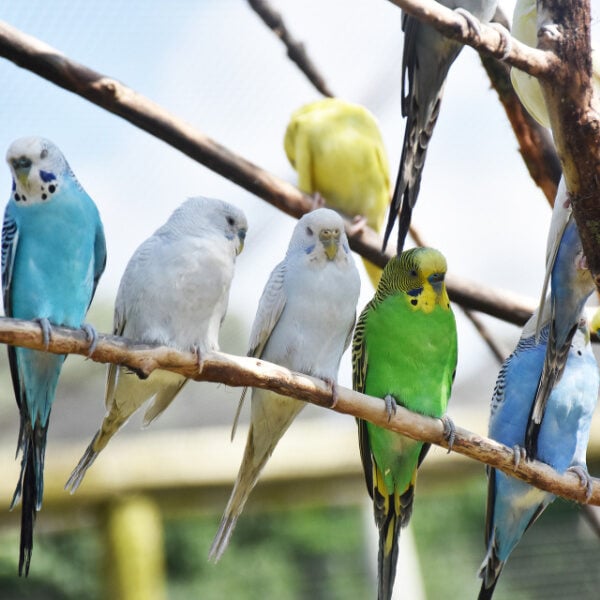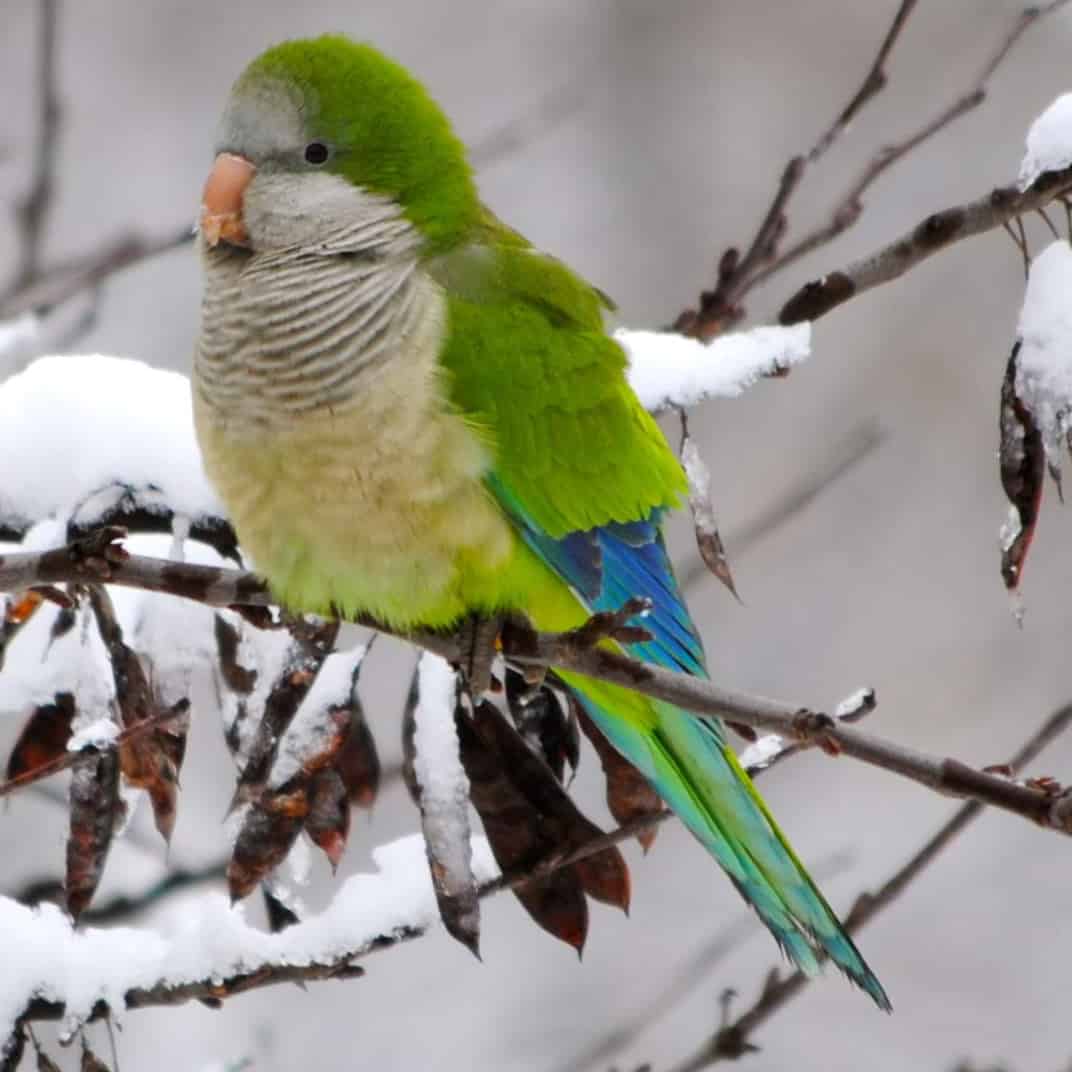
Can You Name 5 Parrot Species That Are Living Wild in the USA?
Last Updated on by Mitch Rezman
When we think of parrots, we often imagine them in tropical rainforests or exotic islands. However, you might be surprised to learn that several parrot species have established wild populations right here in the United States.
These birds, often descendants of escaped or released pets, have adapted to urban and suburban environments, thriving in places far from their native habitats.
Here are five parrot species you can find living wild in the U.S., along with their fascinating stories of survival.
1. Monk Parakeet
Native Range: South America (Argentina, Brazil, Uruguay)
Where Found in the U.S.: Florida, Texas, New York, Illinois, Connecticut
The monk parakeet, also known as the Quaker parrot, is one of the most widespread wild parrot species in the United States. Originally native to South America, these small, green parrots with grayish chests were brought to the U.S. as pets in the mid-20th century.
Over time, many escaped or were released, leading to the establishment of feral populations across the country.
Monk parakeets are unique among parrots because they build large, communal nests out of sticks, often on utility poles, cell towers, or trees.
These nests can house multiple pairs of birds and are used year-round. Their adaptability to urban environments, combined with their ability to survive cold winters in places like Chicago and New York, has allowed them to thrive in unexpected areas.
While some utility companies view their nests as a nuisance, many people enjoy seeing these charismatic birds in parks and neighborhoods.
2. Red-Crowned Parrot
Native Range: Northeastern Mexico
Where Found in the U.S.: Texas (particularly the Rio Grande Valley), California, Florida
The red-crowned parrot, also known as the green-cheeked Amazon, is an endangered species in its native range of northeastern Mexico.
However, it has established robust feral populations in parts of the United States, particularly in Texas, where it is considered a naturalized species.
These medium-sized parrots are bright green with a distinctive red patch on their foreheads and a splash of blue on their wings.
In Texas, red-crowned parrots are often found in urban areas like Brownsville, McAllen, and Harlingen, where they roost in large flocks in trees or on power lines.
They are highly social birds and are often seen flying in groups, squawking loudly.
Their ability to adapt to urban environments and feed on a variety of fruits, seeds, and flowers has helped them thrive in the U.S.
Interestingly, their population in Texas may now rival or even exceed that of their native range, making them a conservation paradox: endangered in the wild but thriving in urban areas.
3. Nanday Parakeet
Native Range: South America
Where Found in the U.S.: Florida, California, Texas
The nanday parakeet, also known as the black-hooded parakeet, is another South American species that has established wild populations in the United States.
These medium-sized parrots are easily recognizable by their black heads, green bodies, and blue-tinted wings and tail feathers.
They are particularly common in Florida, where they can be seen in cities like Miami and Tampa.
Nanday parakeets are highly social and often form noisy flocks that roost in palm trees or other tall vegetation.
They are known for their loud, piercing calls, which can sometimes make them unpopular with residents. Despite this, their striking appearance and playful behavior make them a favorite among birdwatchers.
Like other feral parrots, nanday parakeets have adapted well to urban environments, feeding on a wide variety of fruits, seeds, and flowers.
4. Yellow-Chevroned Parakeet
Native Range: South America
Where Found in the U.S.: California, Florida, Texas
The yellow-chevroned parakeet is a small, green parrot with a yellow patch on its wings, giving it its name.
Native to South America, this species has established feral populations in several U.S. cities, particularly in southern California and Florida.
In Los Angeles, they are often seen in urban parks, residential neighborhoods, and even college campuses.
Yellow-chevroned parakeets are highly adaptable and thrive in areas with abundant food and nesting opportunities.
They feed on a variety of fruits, seeds, and nectar, often taking advantage of non-native plants introduced by humans.
These birds are social and often seen in small flocks, chattering noisily as they fly between trees. Their ability to adapt to urban environments has allowed them to establish stable populations in the U.S.
5. Mitred Parakeet
Native Range: South America
Where Found in the U.S.: California, Florida
The mitred parakeet is a large, green parrot with red markings on its face and head.
Native to the Andes region of South America, this species has become a common sight in parts of California and Florida.
In Los Angeles, they are often seen flying in large, noisy flocks, particularly in areas with palm trees.
Mitred parakeets are highly social and often roost in large groups.
They are known for their loud, raucous calls, which can be heard from a distance. These parrots are opportunistic feeders, consuming a variety of fruits, seeds, and flowers.
Their adaptability to urban environments, combined with their striking appearance, has made them a favorite among birdwatchers in the U.S.
Why Are These Parrots Thriving?
The success of these parrot species in the United States can be attributed to several factors:
Adaptability: Parrots are highly intelligent and adaptable, allowing them to thrive in urban and suburban environments.
- Abundant Food Sources: Cities provide a variety of food sources, including fruits, seeds, and flowers, as well as food left out by humans.
- Lack of Natural Predators: In urban areas, parrots face fewer predators than they would in their native habitats.
- Human Activity: The pet trade has introduced many parrot species to the U.S., and escaped or released birds have formed breeding populations.
Conclusion
The presence of wild parrots in the United States is a fascinating example of how wildlife can adapt to human-altered environments.
While their existence raises questions about invasive species and conservation, these birds have become a beloved part of the urban landscape in many areas.
Whether you’re in Florida, California, or Texas, keep an eye (and ear) out for these vibrant, noisy residents—you might just spot a wild parrot flocking in your neighborhood!
Written and edited by Mitch Rezman and the Windy City Parrot content team.
Author Profile
Latest entries
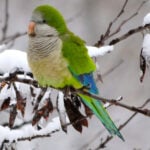 The Traveling BirdJune 26, 2025Can You Name 5 Parrot Species That Are Living Wild in the USA?
The Traveling BirdJune 26, 2025Can You Name 5 Parrot Species That Are Living Wild in the USA?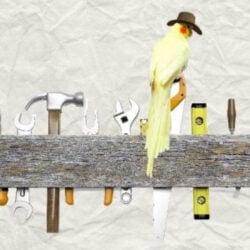 Bird BehaviorJune 26, 2025How is it Parrots Are Problem Solvers Social Animals and Even Use Tools?
Bird BehaviorJune 26, 2025How is it Parrots Are Problem Solvers Social Animals and Even Use Tools?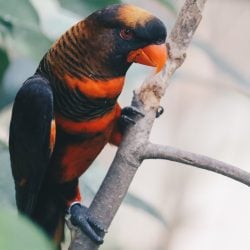 Bird & Parrot AnatomyJune 25, 2025How a Tiny Chemical Modification Makes Parrots Nature’s Living Paintings
Bird & Parrot AnatomyJune 25, 2025How a Tiny Chemical Modification Makes Parrots Nature’s Living Paintings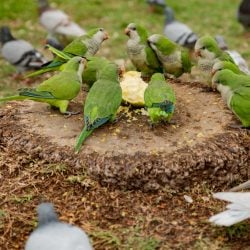 PigeonsJune 20, 2025How Do Parrots Thrive in Cities Outside Their Native Habitats?
PigeonsJune 20, 2025How Do Parrots Thrive in Cities Outside Their Native Habitats?

